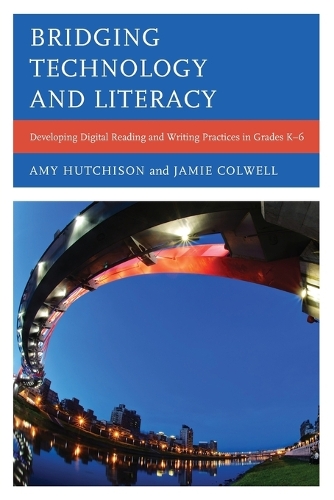
Bridging Technology and Literacy: Developing Digital Reading and Writing Practices in Grades K-6
(Paperback)
Available Formats
Publishing Details
Bridging Technology and Literacy: Developing Digital Reading and Writing Practices in Grades K-6
By (Author) Amy Hutchison
By (author) Jamie Colwell
Bloomsbury Publishing PLC
Rowman & Littlefield Publishers
18th June 2015
United States
Classifications
Tertiary Education
Non Fiction
Teaching of a specific subject
Educational: First / native language: Reading and writing skills
Primary and middle schools
372.6044
Physical Properties
Paperback
208
Width 154mm, Height 227mm, Spine 16mm
322g
Description
This book provides a practical understanding of digital literacy and information on integrating digital technology into English Language Arts and literacy instruction at the K-6 grade levels. Cross-disciplinary connections are also provided to bridge literacy and language arts and other content areas for a more integrated approach to literacy instruction. This text not only introduces readers to various types of digital tools and resources, but also provides practical approaches for using digital tools in instruction to help students read and write multimodal digital texts. Each chapter contains key elements that prompt brainstorming about digital tools, connections to the Common Core State Standards in Language Arts, and resources for teachers to plan instruction that incorporates digital tools. Comprehensive sample lesson plans that are aligned to the Common Core State Standards and English Language Proficiency Standards are provided throughout the text. Information about digital citizenship, digital copyright, lesson planning, and long-range planning is also provided.
Reviews
Bridging Technology and Literacy blends a focus on teaching and learning with a rich collection of instructional practices for integrating technology. The clear descriptions and a wealth of practical activities and examples put directly into the hands of readers will help to ease the transition into the digital literacy skills so important in today's classrooms. The authors' experiences with both classroom activities and conducting research in the field work together to help teachers visualize and understand the integral connection between reading and writing, whether with print or digital texts. I especially appreciate the attention these authors have given to describing the constraints in the classroom that might put up speed bumps to technology integration. Let's talk about these issues and work through them together, rather than assuming everything will always run smoothly, or the opposite, that nothing will work correctly. Bridging Technology and Literacy arms teachers with the tips of the trade that will support their technology integration. -- Elizabeth Dobler, professor, Elementary Education, Early Childhood, and Special Education, Emporia State University
Bridging Technology and Literacy invites teachers and schools to reconsider the role of digital technology in todays literacy instruction, explores the complexities of digital literacies, and offers practical examples of how to teach these literacies to young learners. Teachers will find in this book application possibilities for both mobile and traditional technology platforms to engage students in digital reading and writing practices in their classrooms. -- Ewa McGrail, PhD, associate professor of language and literacy, Georgia State University
Author Bio
Amy Hutchison is an associate professor at Iowa State University. Her research is focused on approaches to integrating digital technology into literacy instruction and ways to support teachers in their technology integration efforts. Jamie Colwell is an assistant professor at Old Dominion University. Her research interests include adolescent literacy, pre-service teacher education in literacy, and the uses of technology to promote literacy in K-12 education.
